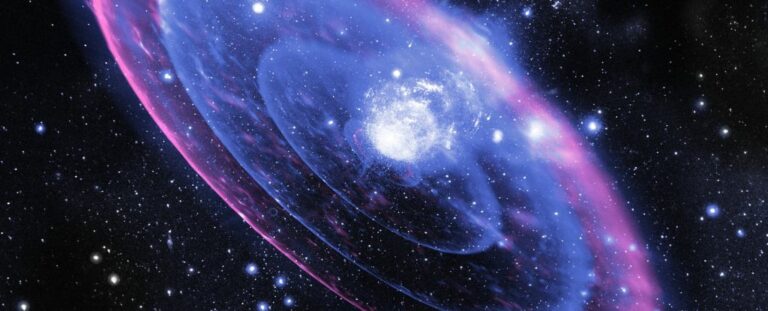A novel type of supernova left behind stardust in an ancient meteorite.
A minute particle of olivine, a mineral found in a grain of dust recovered from an ancient meteorite in Antarctica, has revealed its extraterrestrial origins. The isotope composition of this tiny speck suggests that it was produced by a star that perished long before the birth of our Solar System. These rare presolar grains, known for their ability to provide insights into different stellar environments and the potential formation of worlds, are difficult to identify due to their small size and deep embedding in meteorite rock.
A team led by astrogeologist Nicole Nevill from the Lunar and Planetary Institute in Houston made this remarkable discovery using a technique called atom probe tomography. The olivine presolar grain found in the Antarctic meteorite has shattered previous records, unveiling a captivating history.
According to Nevill, “Materials created within our Solar System exhibit predictable ratios of isotopes, which are variants of elements with varying numbers of neutrons. However, the particle we analyzed possesses a magnesium isotopic ratio that is distinct from anything found in our Solar System.” Nevill, who conducted this analysis during her PhD studies at Curtin University in Perth, Australia, further explains, “The results were truly extraordinary. The highest magnesium isotopic ratio previously observed in presolar grains was around 1,200. In our study, the grain exhibited a value of 3,025, the highest ever recorded. This exceptionally elevated isotopic ratio can only be attributed to the formation of a recently discovered type of star – a hydrogen burning supernova.”
Meteorites, which are rocks that have descended to Earth from beyond our atmosphere, offer us a glimpse into the cosmos. They serve as time capsules, providing information about their formation and detailed insights into the composition of the dust from which they originated.
Generally speaking, these are fragments of our Solar System, made up of rocks that could have originated in the early stages of the Solar System or fragments from other planets.

Nevill and her team discovered a presolar grain in the Allan Hills 77307 meteorite, which was found in Antarctica in the late 1970s. This meteorite is categorized as a carbonaceous chondrite, a type of carbon-rich rock that originated in the early stages of the Solar System and drifted through space as an asteroid for billions of years.
Olivine, a silicate mineral containing magnesium and iron, is commonly found on Earth and in extraterrestrial environments. However, its isotope composition varies depending on its origin. The high magnesium-25 ratio in ALH 77307 is a distinctive signature of presolar grains.
Through atom probe tomography, Nevill and her team analyzed a tiny speck of olivine measuring only 400 by 580 nanometers. They found that it contained an unusually high amount of magnesium-25, surpassing any previously measured sample and indicating a non-Solar System origin.
According to models, this unique ratio is likely the result of a violent event such as a supernova, which the Solar System has not yet experienced. The presolar grain remained intact until the Solar System formed, eventually becoming part of the AH 77307 meteorite.
Physicist and geochemist David Saxey from Curtin University in Australia stated, “The atom probe technology has provided us with a level of detail that was previously inaccessible in our research.”
The discovery of hydrogen burning supernovae is a recent development, coinciding with our examination of minuscule dust particles. The employment of the atom probe in our research provides a deeper insight into the formation of these stars. This, nevertheless, is a task for the future. Presently, we can only admire the increasing proficiency of scientists in locating and studying the minute details within meteorites.
The research has been published in The Astrophysical Journal.
Do not forget to share your opinion with us to provide you with the best posts !




0 Comments